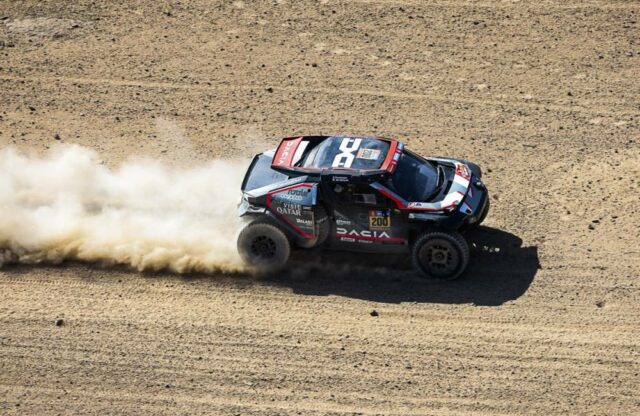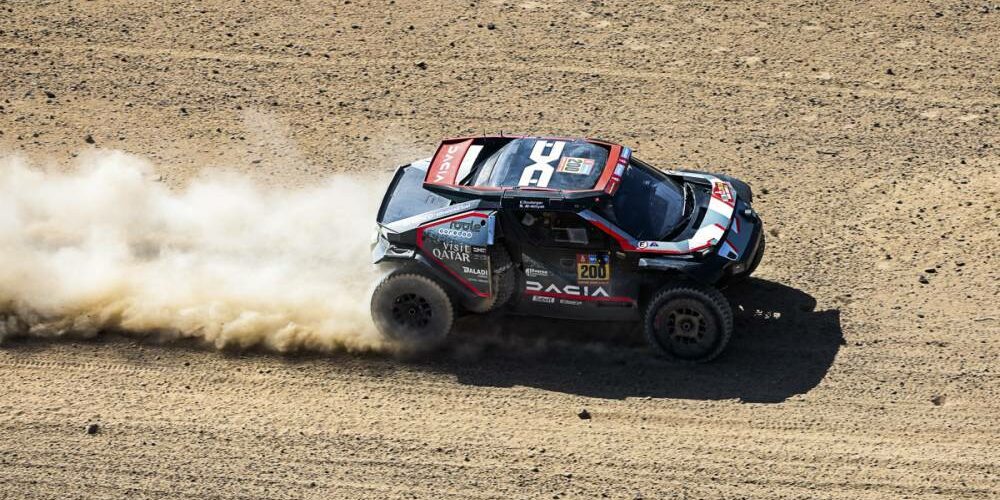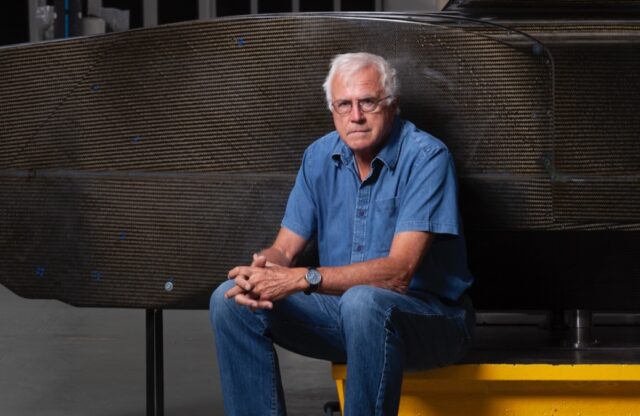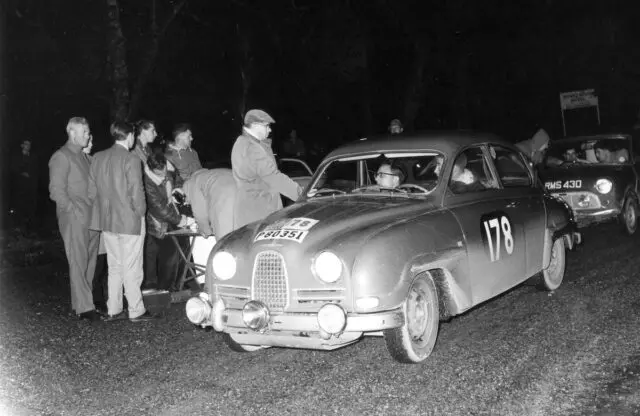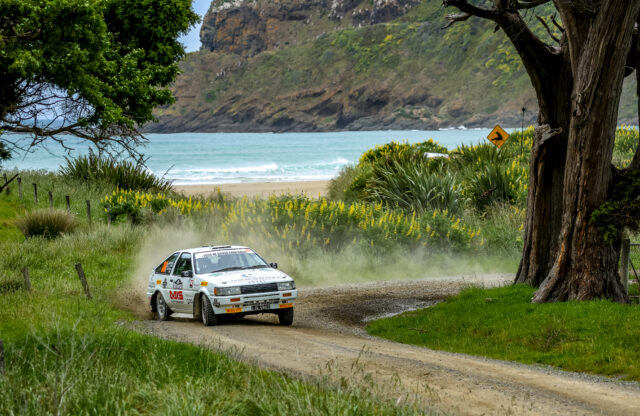Dacia’s Sandriders entry into the 2025 Dakar Rally has suddenly hit the headlines for all the wrong reasons, after rally star Sebastien Loeb and Fabian Lurquin’s car was disqualified due to safety concerns following a roll – but the three-car Dakar team has made a serious impact on the 2025 Dakar Rally in a more positive way, too.
This is Dacia’s first time at the Dakar, and only the second competitive outing for its three Sandriders vehicles. Could it take a Dakar win first time out? The odds are now against it, but at the time of writing there are still two cars running, with Dakar veteran Nasser Al-Attiyah and Edouard Boulanger in with a chance of the podium, and the less experienced Cristina Gutierrez and Pablo Moreno further back.
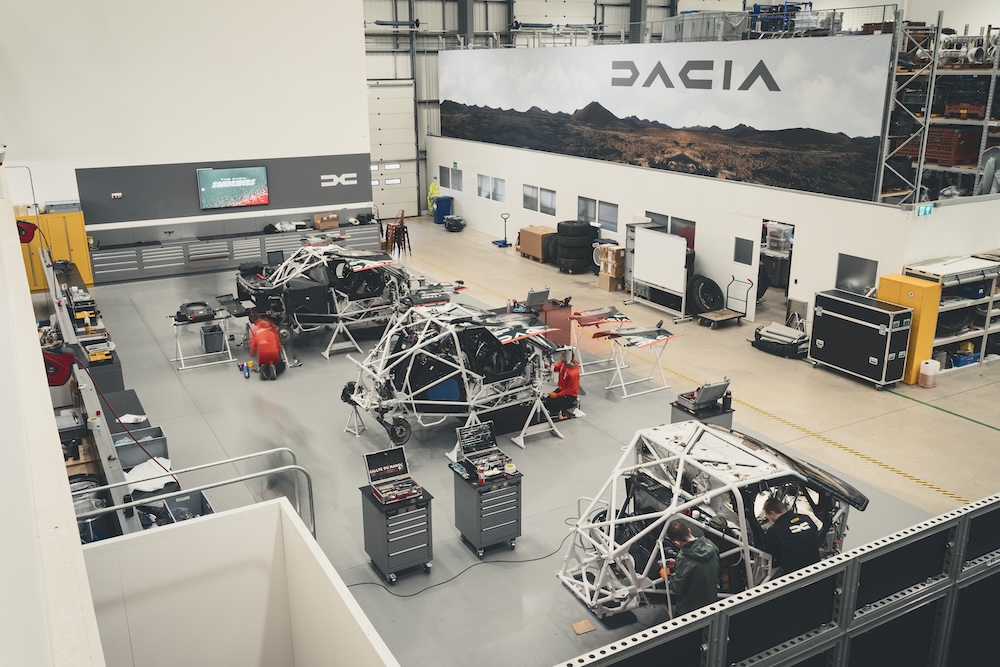
The cars were developed and built at Prodrive, UK by a mix of Prodrive and Dacia staff, in what seems to have been one of the happiest motor sport collaborations ever seen. We visited Prodrive just ahead of the cars being shipped to Saudi Arabia for the start of the Dakar, to watch their final builds and understand what’s involved with developing a Dakar team from scratch.
The Sandriders team is set up in a private, secure area of the now-massive Prodrive HQ in Banbury, Oxfordshire; all white walls, shiny floors and sleek grey tool chests. Prodrive has huge history is rallying, of course, having taken Subaru to three consecutive manufacturer’s titles and three driver’s titles in WRC, but Dakar is another best entirely, as it found out with its previous BRX Hunter project.
The Dacia Sandriders project builds on that experience, and it took first and second places on its very first outing, the 2024 Rallye du Maroc rally raid – but technical director Philip Dunabin is quick to point out that the Dacia is not simply a reworking of Prodrive’s car. He was joined by team principal Tiphanie Isnard, team manager Alistair Gibson, chief technician Alan McGuinness and Dacia UK brand director Luke Broad, all keen to explain their involvements in this crucially important project for Dacia.
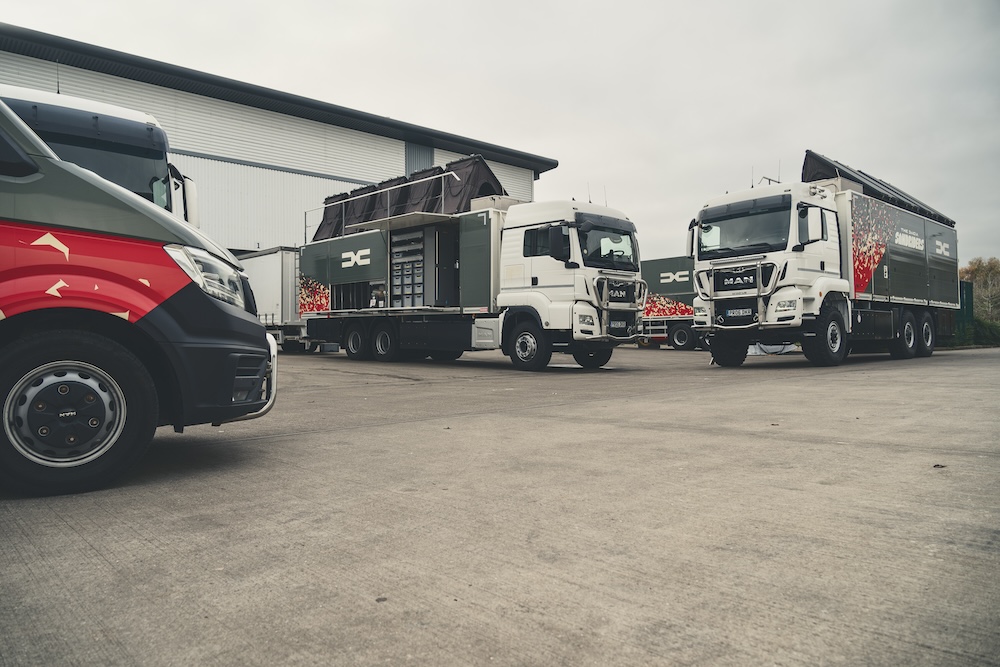
Even a top ten finish would be a huge achievement for a first time at Dakar, which Prodrive founder David Richards refers to as “the Everest of motor sport”. Just the logistics behind it are hard to fathom: The Sandriders team consists of five comprehensively equipped support trucks, three vans and nine all-terrain motorhomes, plus a few Nissan Navaras and Dacia Dusters (of course!) as well. Facilities within the trucks include a workshop, clean room (for sensitive mechanical part rebuilds), tools, racks of spares and even washing machines.
In all, there are 25 vehicles and 62 staff supporting the three rally cars. The drivers of course bag the motorhomes, but for those less fortunate there are rooftop tents on the lorries – and for those even less fortunate than that, there are single-man bed tents pitched on the ground, alongside the trucks.
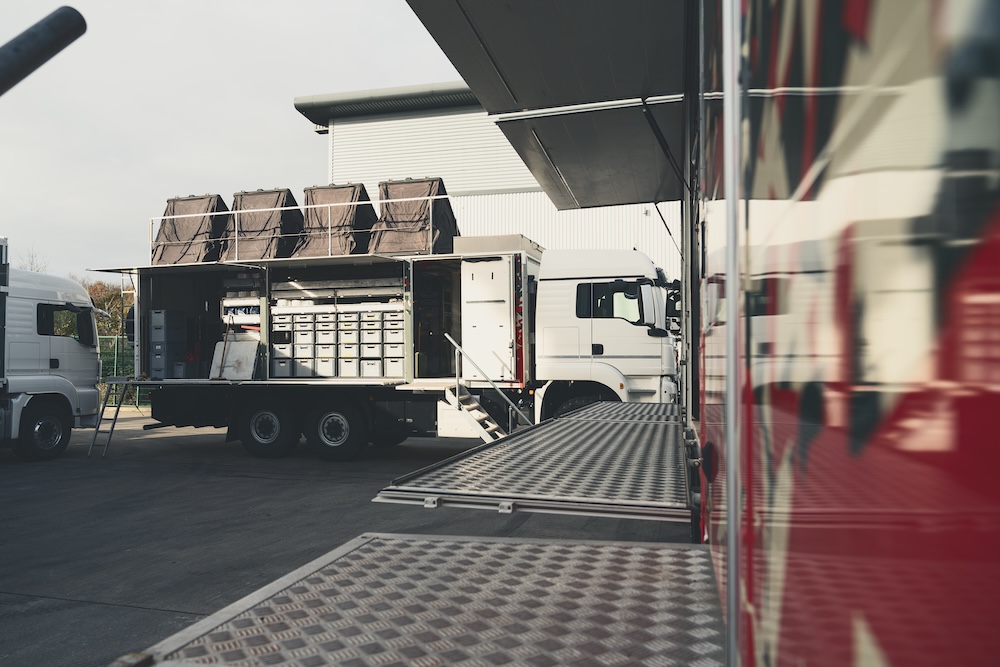
Even before the Rallye du Maroc one-two, the Dacia Sandriders team had covered 10,000km in testing, in the most challenging conditions, starting at Sweet Lamb rally stages in Wales and progressing to tougher, dustier, hotter desert trials.
The cars themselves are a technical tour de force. If you think they’re basically glorified dune buggies, think again. It takes around 800 hours to build the chassis, and 1200-1400 hours to build a car onto it. And they have to be tough, because there’s a 50-hour penalty for an engine change, which itself can take ten to 12 hours to complete. With 4700km of stages and a similar distance on hot, dusty roads, the number one rule is not to have a problem with reliability.
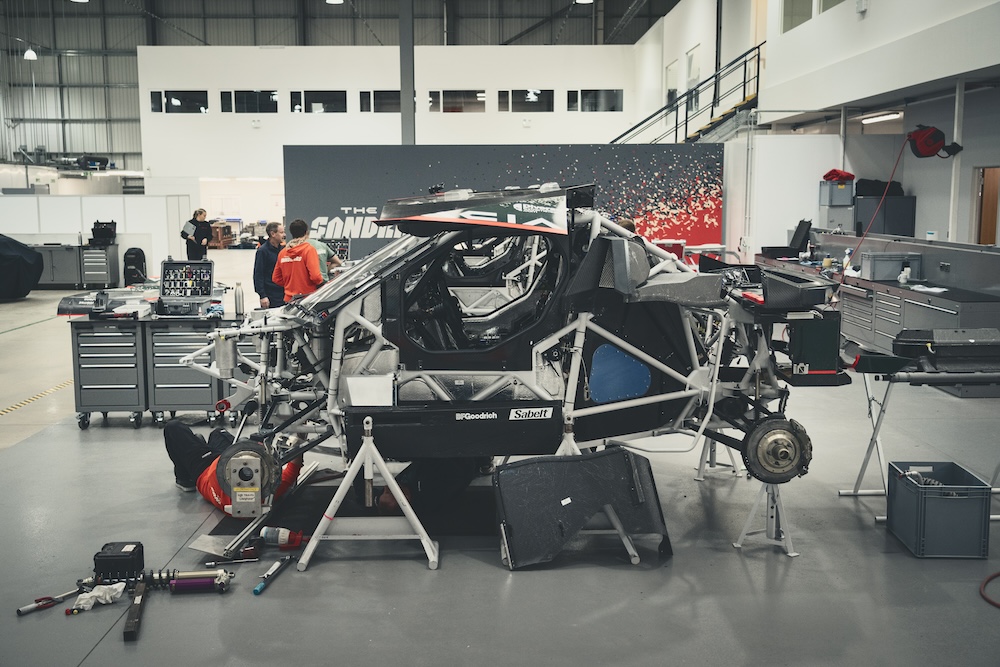
At the centre of each car is the tough Nissan 3.0-litre twin-turbo V6, which has to be mostly production specification to comply with regulations, although the turbos are allowed to be changed (and have been), along with a dry-sump oil system and non-standard intercoolers, as you’d expect.
The tubular-steel chassis and rollcage are one massive structure, over which the carbonfibre bodywork – styled by the Dacia design team – fits. These are huge vehicles, and yet the cockpits are relatively cramped, packed as they are with safety and navigation equipment. Heat insulation and air-con systems specially developed by Renault Group engineers keep the drivers at basic levels of comfort, although the best that’s possible is ‘cooler air’ in the heat of the desert.
The seats have been specially designed by Prodrive for maximum impact absorption, because back injuries have been common on the Dakar; not just from accidents but from the days of pounding over rocks and dunes. These seats will become compulsory from 2027, so Dacia is ahead of the game in fitting them.
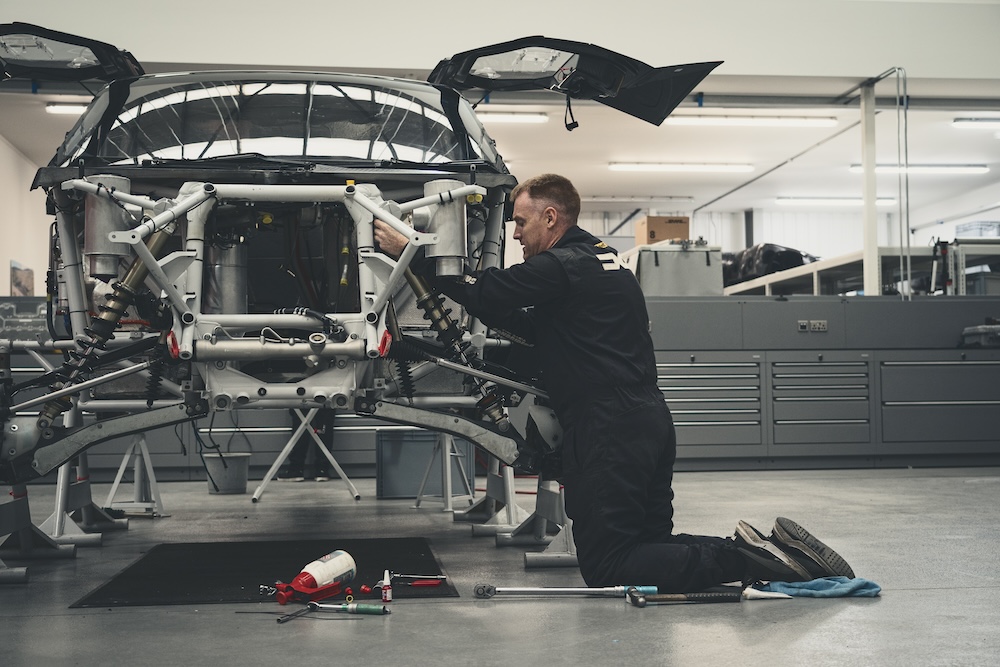
There are built-in hydraulic jacks, and neat touches to aid drivers if – or rather when – they need to change a wheel in the middle of nowhere, right down to using built-in ratchet straps to haul the heavy spare wheel back into place. Brakes and suspension can be changed in minutes, and these are regularly renewed overnight, and the gearbox and rear differential each take around 25-30 minutes to swap. Again, there’s a fair chance they’ll need to be changed at some point.
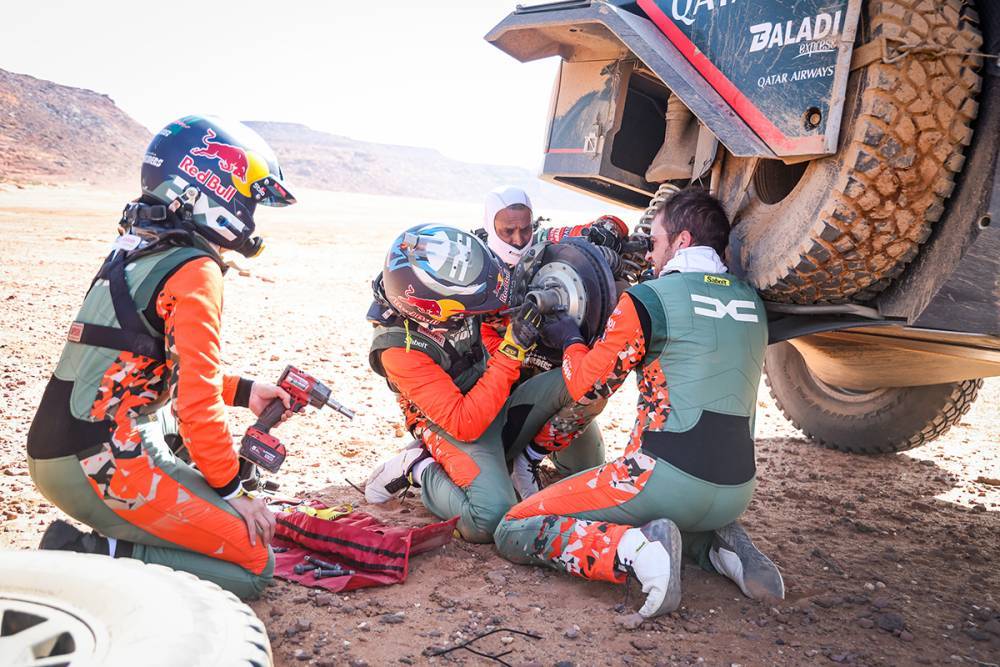
Much of the design is focused on details, though: for example, all bolt heads are the same size for maximum efficiency, and there are magnets on the side of each car to hold bolts when they’re removed. The work that has gone into routing cables and hoses to ensure reliability is mind-boggling, and the Dacia team even used virtual-reality headsets early on in the designs to ensure that the crews had the best-possible vision out of the cockpits.
Dacia has invested incredible amounts of time and money into its Sandriders programme, and will be hoping for a strong result when the Dakar ends on January 17, 2025. Watch closely, because there’s still a chance of that at the moment…
